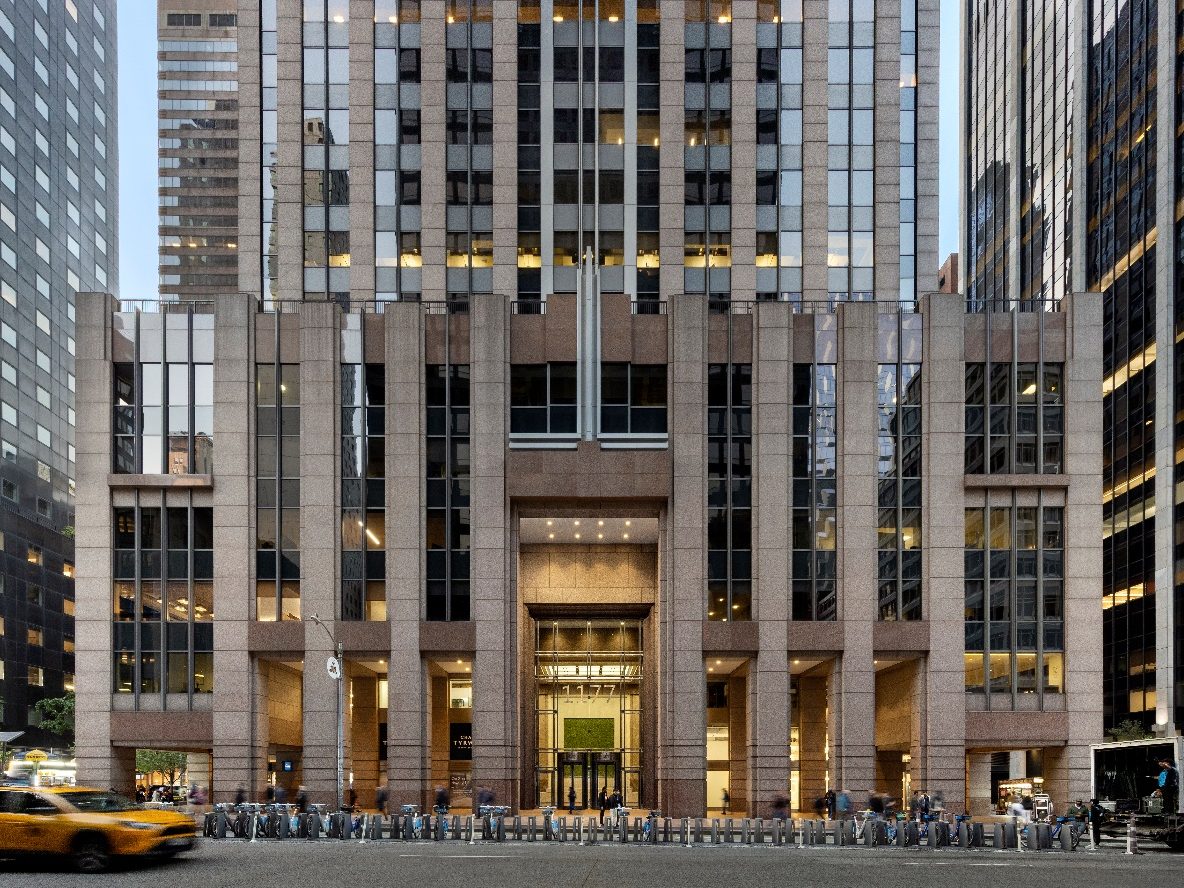What the UBS-Credit Suisse Deal Means for CRE
"They're going to be gigantic," said one observer of the newly merged banks.

The UBS Tower in downtown Nashville, once of the Swiss bank’s many U.S. locations. Image courtesy of KBS
Among the many ramifications of UBS‘s planned 3 billion Swiss franc ($3.25 billion) acquisition of Credit Suisse is the marriage of the two largest Swiss banks’ real estate debt books and asset management platforms.
UBS will acquire Credit Suisse in an all-stock transaction, the requirement for shareholder approval of the deal having been waived. Regulators are assuring timely approval of the deal, which is slated for a second quarter close.
While the anticipated combined size of the financial institutions’ real estate businesses could not immediately be learned, both are major real estate lenders both in the U.S. and globally. UBS Asset Management’s Real Estate & Private Markets business, which has been active in the U.S. since 1978, is already one of the world’s largest asset managers in real assets, according to the bank’s website.
READ ALSO: What Signature Bank’s Shutdown Means for NYC Real Estate
“They’re going to be gigantic,” said Andrew Spindler, senior vice president in Green Street‘s advisory group. “That doesn’t necessarily mean good or bad, it just means during this takeover it’s going to take a lot of time to sort through that much volume.”
While the size of the U.S. portions of UBS’s and Credit Suisse’s loan books and assets under management could not immediately be ascertained, both banks have a significant stateside presence.
A report from Bisnow in London estimates that the combined bank will have an $80 billion commercial real estate loan book with upward of $100 billion of real estate assets under management. That would make the combined bank the fourth-largest commercial real estate lender in the world, behind a trio of U.S. institutions—Wells Fargo, JP Morgan and Bank of America. According to Globe Street, the acquisition would result in a $42.8 billion commercial real estate debt book, with almost $288.8 billion in residential mortgages.
“This is probably going to be felt a little bit more in Europe and in the U.K.,” said Spindler. Regardless, “(T)hese guys are huge, you can’t have that big of a book and not have a very large foothold here in the U.S.”
Representatives of UBS in New York did not respond to an inquiry. A spokesperson for Credit Suisse in New York declined to comment.
Credit Suisse’s stock price imploded last week after the collapse of Silicon Valley Bank and Signature Bank sparked liquidity concerns. The Zurich-based bank borrowed $54 billion from the Swiss National Bank, Switzerland’s central bank, in an unsuccessful attempt to calm investors.
Ultimately, the Swiss central bank helped facilitate the acquisition, initiating discussions between the parties, alongside the Swiss Federal Department of Finance and the Swiss Financial Market Supervisory Authority, known as FINMA.
“This acquisition is attractive for UBS shareholders but, let us be clear, as far as Credit Suisse is concerned, this is an emergency rescue,” UBS Chairman Colm Kelleher said in Sunday’s statement announcing the merger. “We have structured a transaction which will preserve the value left in the business while limiting our downside exposure. Acquiring Credit Suisse’s capabilities in wealth, asset management and Swiss universal banking will augment UBS’s strategy of growing its capital-light businesses.”
Ratings on standby
Credit Suisse’s 2022 end-of-year report had anticipated potential “significant losses” in the real estate sector. “We finance and acquire principal positions in a number of real estate and real estate-related products, primarily for clients, and originate loans secured by commercial and residential properties,” the report said, noting that as of December 31, the firm’s real estate loans, as reported to the Swiss National Bank, totaled approximately 143.7 billion Swiss francs ($155.7 billion). The firm also securitizes and trades in commercial and residential real estate, as well as real estate-related whole loans and mortgages and other products, including CMBS and RMBS.
“Our real estate-related businesses and risk exposures could be adversely affected by any downturn in real estate markets, other sectors and the economy as a whole,” the year-end report stated. “Should these conditions persist or deteriorate, they could create additional risk for our commercial real estate-related businesses.”
On Monday, Fitch Ratings placed UBS Group AG’s ‘A+’ Long-Term issuer default rating and the ‘AA-‘ long-term issuer default ratings of UBS AG and UBS Switzerland AG on ‘Rating Watch Negative.’ The rating agency cited “the uncertain implications of the acquisition on the combined credit profile of the two banks,” as well as “the execution risk that will arise for UBS from the acquisition, as well as the potential weakening of UBS’s business, risk and financial profile during the integration and restructuring of Credit Suisse in an increasingly challenging environment.”
In a September 12, 2022 report, Fitch Ratings had lauded the quality of UBS’s assets, noting that the bank’s exposure to vulnerable assets was “manageable” and that “UBS is less active than some peers in leveraged finance.” Of the investment bank’s $4.8 billion loan underwriting commitments for leveraged, corporate and commercial real estate loans, a manageable $700 million had not been distributed as planned at the end of 2022’s second quarter as market conditions weakened.
Moody’s Investors Service, meanwhile, changed its outlook on UBS’s long-term deposit and senior unsecured ratings from stable to negative on March 21. The rating agency affirmed the ‘A3’ senior unsecured debt and ‘Baa3’ hybrid additional tier 1 rating of UBS Group AG. The agency also affirmed the ‘Aa2’ long-term deposit rating, the ‘Aa3’ long-term senior unsecured debt rating and the a3 Baseline Credit Assessment of UBS AG.
Both rating agencies signaled a reevaluation of Credit Suisse early in the week. Moody’s shifted its outlook from ‘negative’ to ‘under review’ for an upgrade on Monday, while Fitch placed its long-term issuer default rating on ‘Rating Watch Evolving’ on Tuesday.
Swiss Goliath forms as U.S. regional banks falter
Regional banks have often been a last port of call for commercial real estate debt, but they are nevertheless an important one in an environment where debt is more difficult to obtain.
“Essentially the CMBS market is shut down, the large banks are extremely quiet,” said Spindler. “The regional guys were providing some help, albeit on very difficult terms. You’re only going there if you have to, but stuff matures and people have to refinance.” Fewer regional lenders and increased consolidation will have an impact on commercial real estate, but the availability and price of debt will likely be more influenced by other factors.
“These were a lot of the places that people were going to for solutions and they’re arguably in more trouble than anyone else,” said Spindler. “In the CRE space it’s just making what was a difficult situation a little bit worse as your options are simply getting more limited.”
Interest rates, however, remain the major concern as far as cost of capital is concerned, said Spindler. While bank consolidation could have “minimal effects on the margin,” monetary policy remains the key concern there. “That bus is going to be driven by the Fed.”







You must be logged in to post a comment.